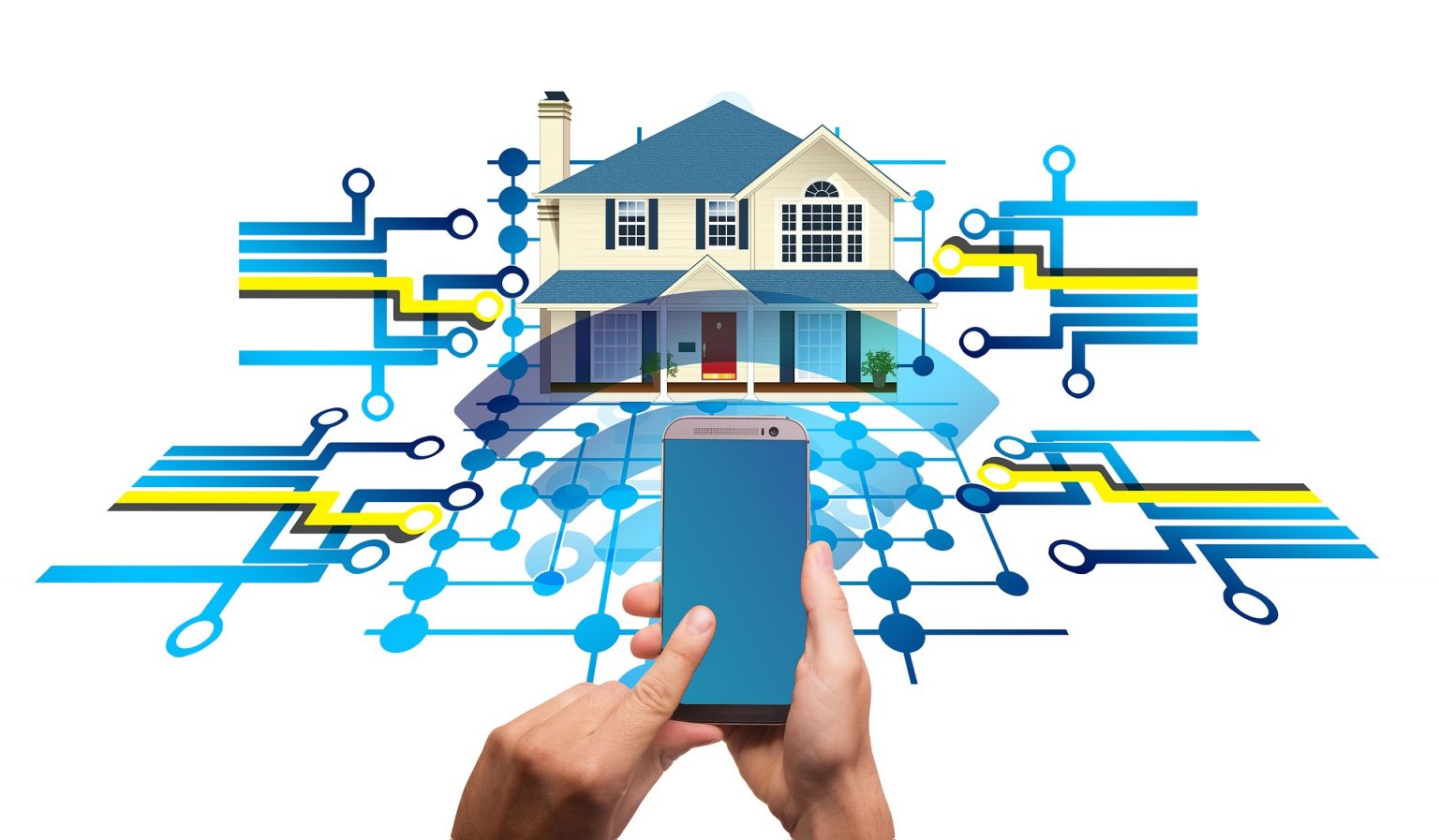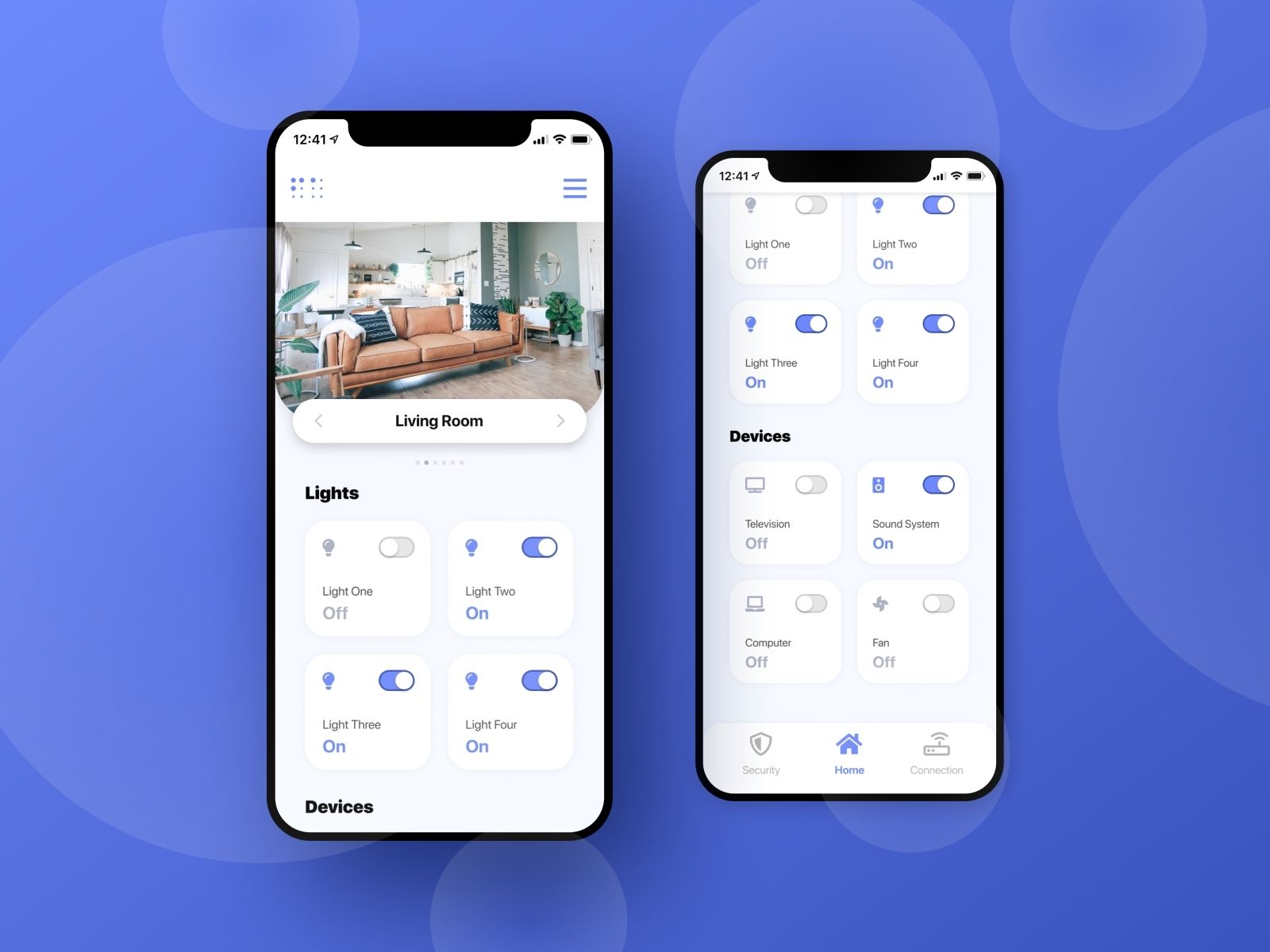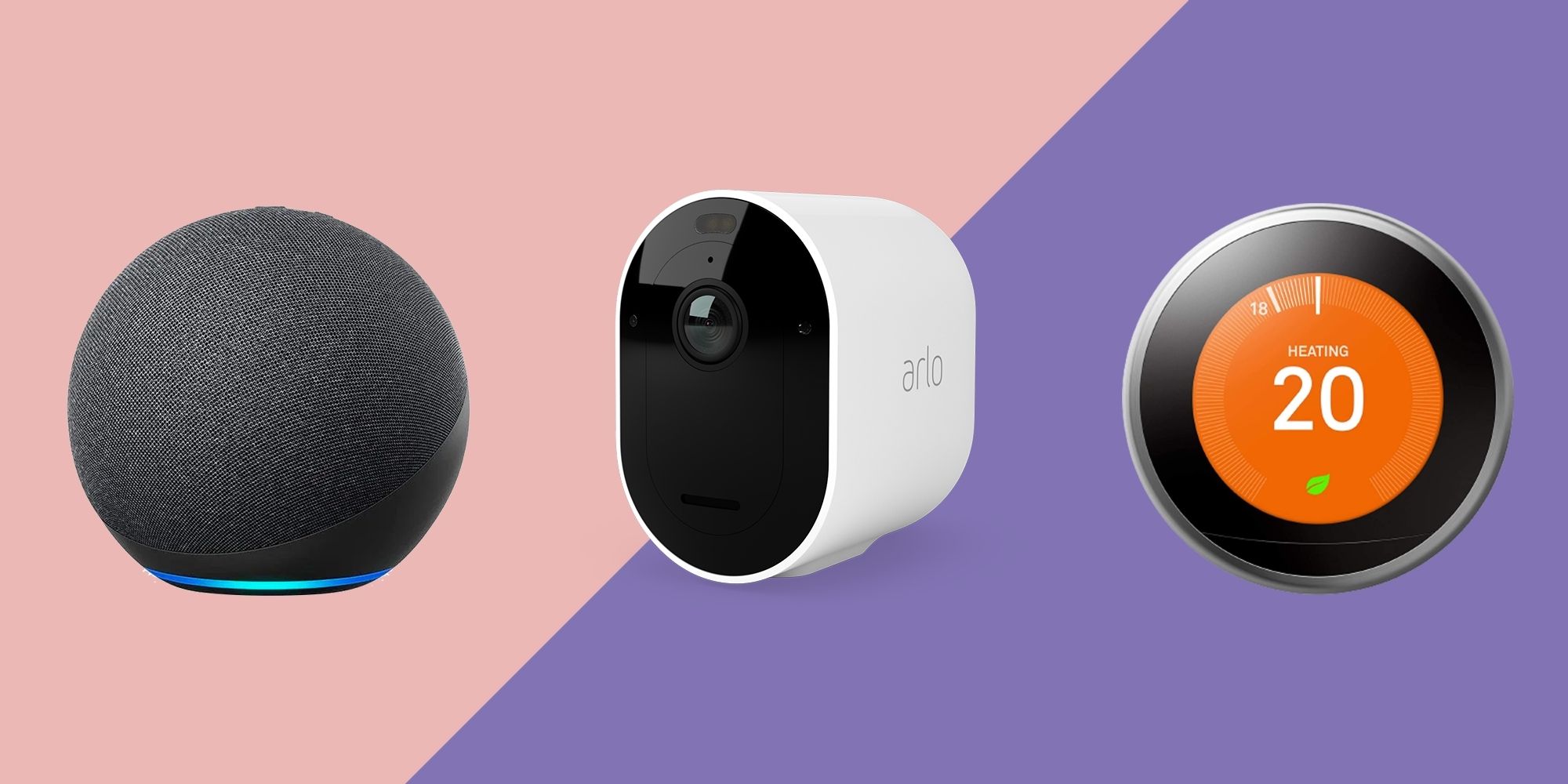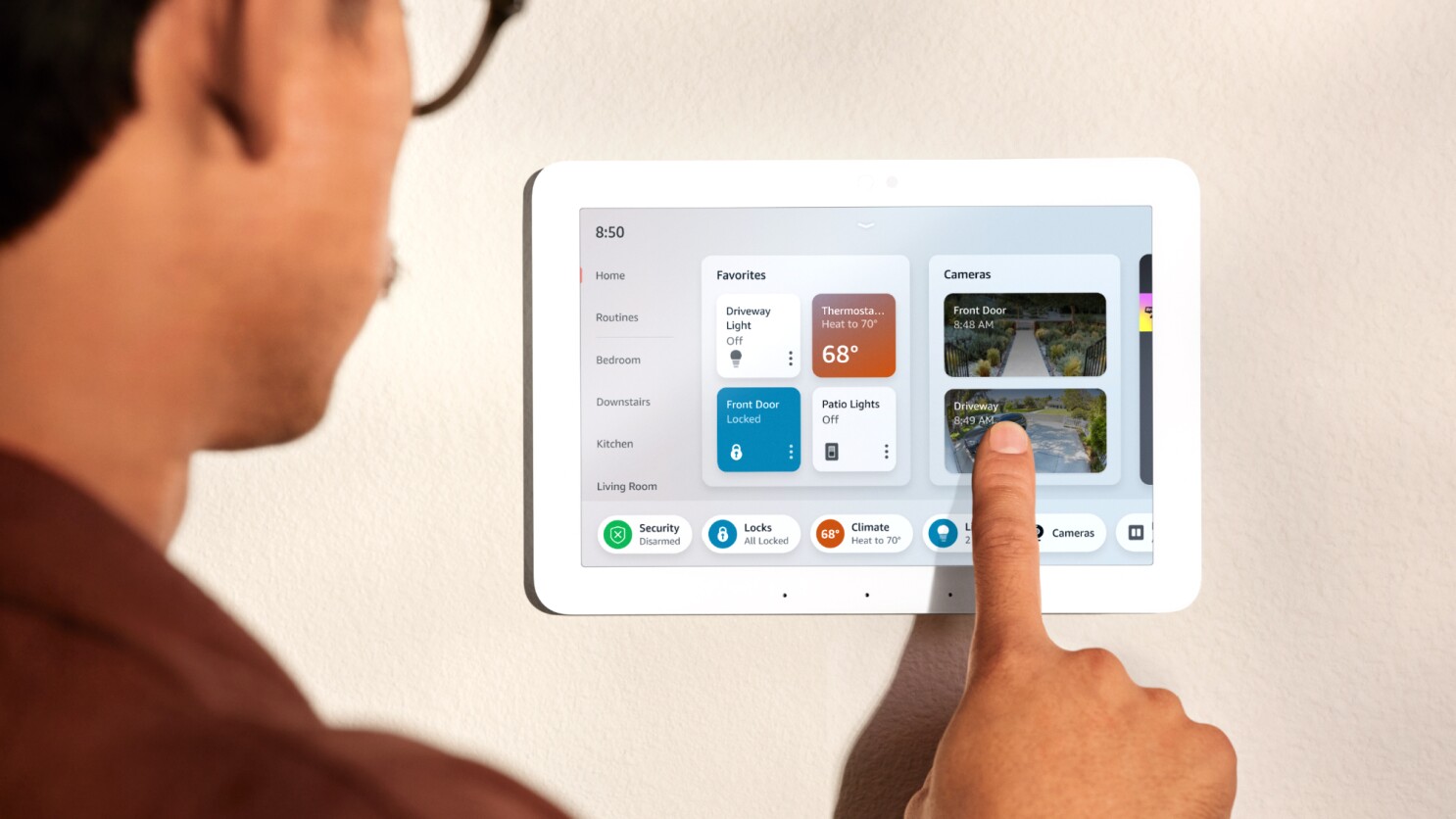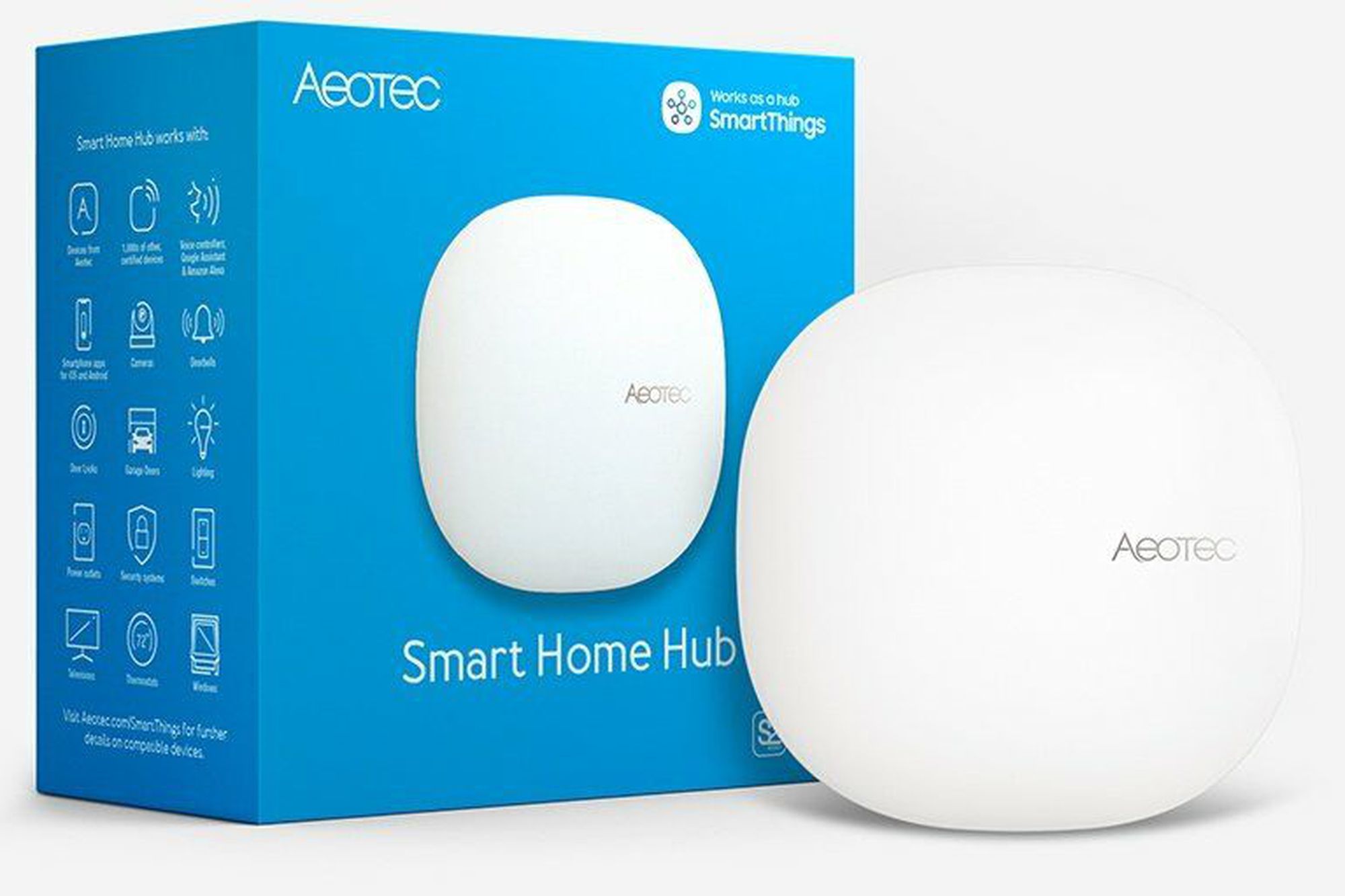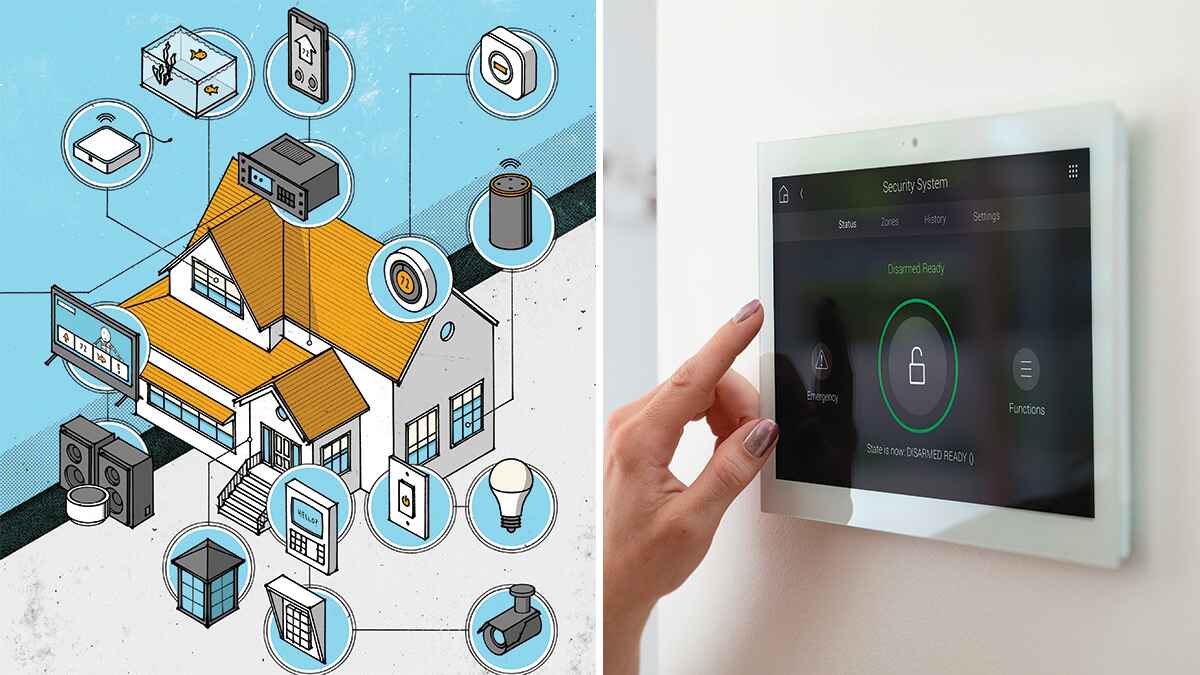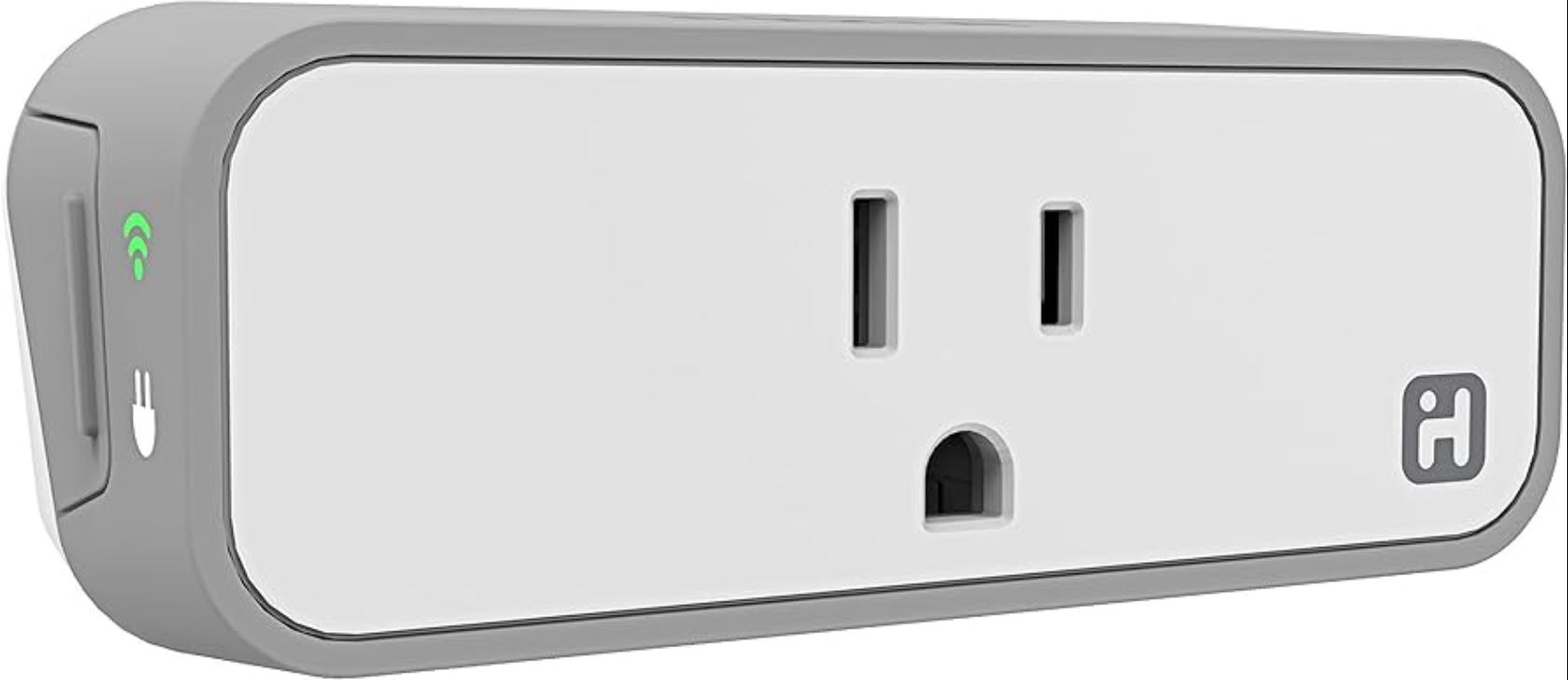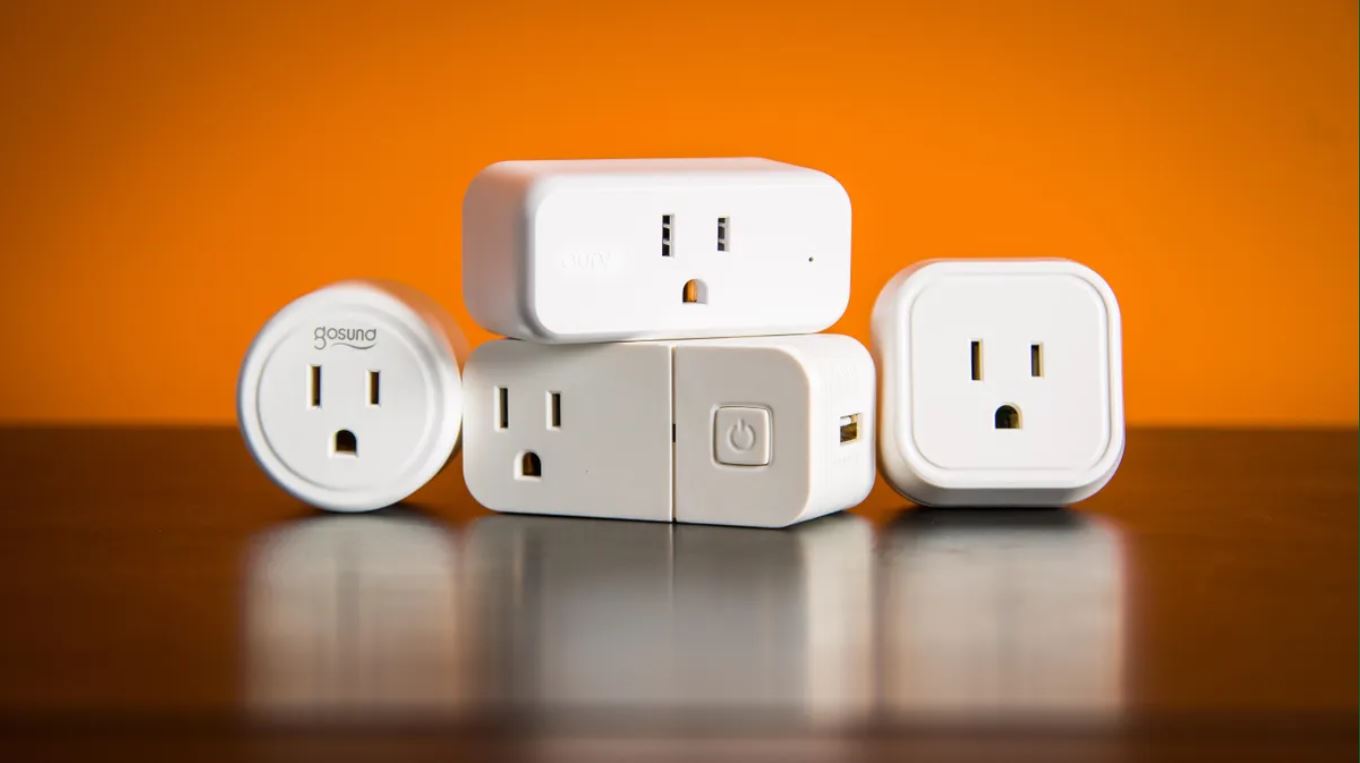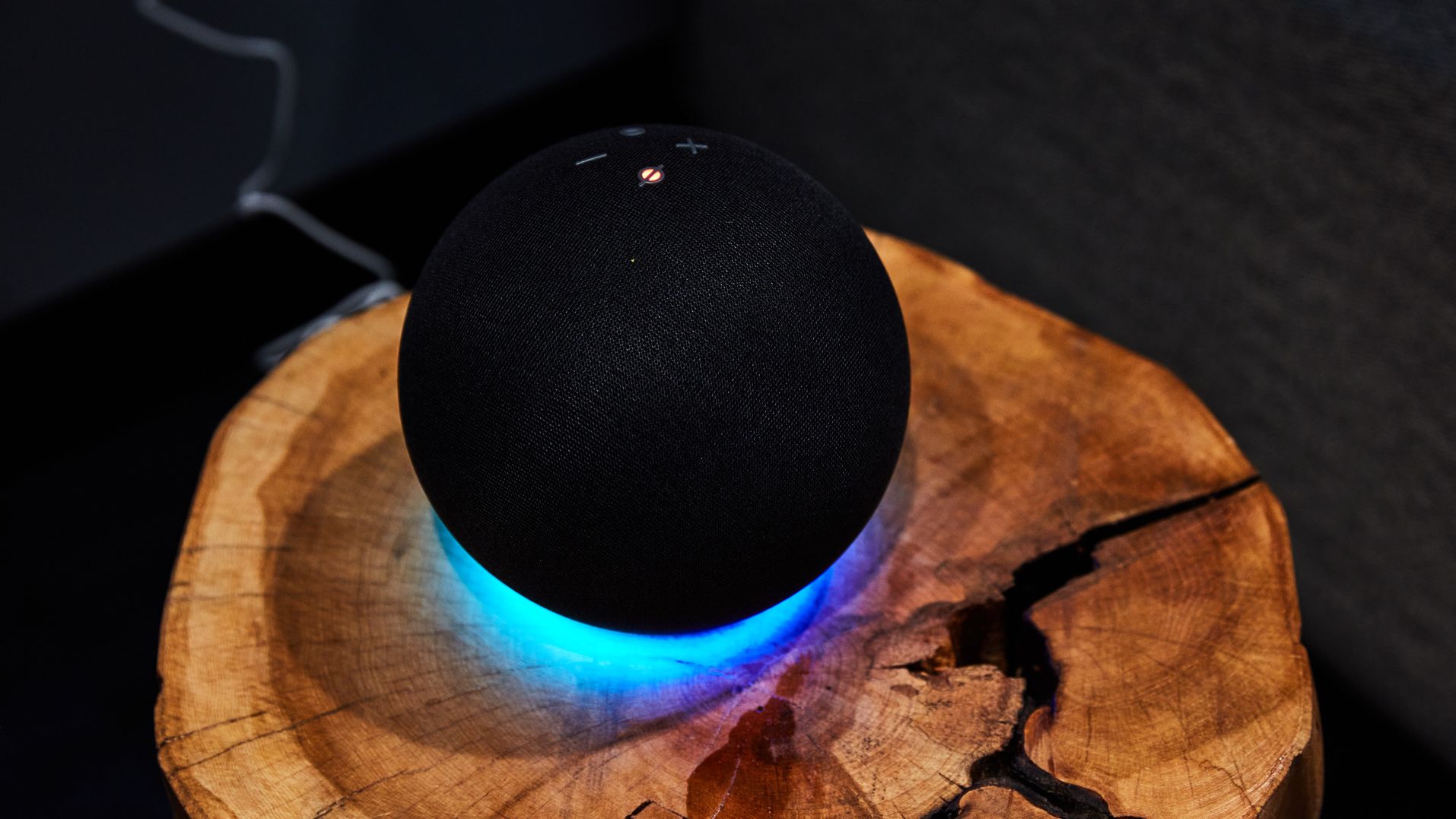What is a Smart Home?
A smart home, also known as a connected home, is a residence equipped with devices and appliances that can be controlled remotely and automated to perform various tasks. These tasks can range from adjusting the temperature and lighting to handling security systems and entertainment devices. The core concept behind a smart home is to enhance convenience, comfort, and efficiency by integrating technology into everyday life.
Central to the idea of a smart home is the Internet of Things (IoT), a network of interconnected devices that communicate and share data with each other over the internet. These devices, also referred to as smart devices or sensors, can be controlled through mobile applications, voice commands, or programmed schedules.
Smart homes are designed to provide homeowners with unprecedented control and automation options, allowing them to manage and monitor various aspects of their home remotely. For example, you can adjust the temperature of your home before you arrive, lock and unlock doors from your smartphone, or even receive notifications when someone enters or leaves your property.
Moreover, smart homes can provide energy savings by optimizing the usage of appliances and systems. Through automated scheduling and intelligent sensors, you can reduce energy waste and lower your utility bills. Additionally, smart homes offer enhanced security features such as surveillance cameras, motion sensors, and smart locks, giving you peace of mind and protecting your property.
From a convenience standpoint, smart homes simplify daily tasks. Imagine being able to turn on the lights, start your coffee maker, and play your favorite songs just by speaking a command or tapping a button. These capabilities not only save time but also create a comfortable and enjoyable living environment.
Overall, the emergence of smart home technology has transformed the way we interact with our living spaces. With the ability to control and automate various aspects of our homes, we can create a more efficient, secure, and personalized living experience.
Benefits of a Smart Home
A smart home offers numerous benefits that can enhance your lifestyle and provide added convenience, comfort, and security. Here are some key advantages of having a smart home:
- Convenience: One of the biggest advantages of a smart home is the convenience it offers. With smart devices and automation, you can control various aspects of your home with just a few taps on your smartphone or through voice commands. You can turn off lights, adjust thermostats, lock doors, and even start appliances remotely, making your life easier and saving you time.
- Energy Efficiency: Smart homes utilize energy-saving features that can help reduce your energy consumption and save money on your utility bills. You can set up schedules for lights, heating, and cooling systems, ensuring they only operate when needed. Additionally, smart thermostats can adjust the temperature based on your preferences and occupancy, optimizing energy usage.
- Security: Smart home security systems offer advanced features to protect your home and provide peace of mind. With smart locks, surveillance cameras, and motion sensors, you can monitor your property remotely and receive real-time alerts. In case of suspicious activity or emergencies, you can take immediate action or alert authorities.
- Comfort: Smart homes provide personalized comfort settings that adapt to your preferences. You can automate temperature adjustments, create ambiance with smart lighting, and set up entertainment systems to match your mood. Imagine coming home to a perfectly lit and cozy atmosphere, with your favorite music playing in the background.
- Remote Monitoring: With a smart home, you can remotely monitor your home’s systems and devices. Whether you forgot to turn off an appliance or want to check if your security system is active, you can access and control everything through your smartphone, regardless of your location. This level of control gives you peace of mind and allows you to stay connected to your home at all times.
These are just a few of the many benefits of having a smart home. As technology continues to advance, the possibilities for enhancing your living experience will only grow. From the convenience of automation to the increased security and energy efficiency, a smart home offers a range of advantages that can greatly improve your day-to-day life.
Essential Components for a Smart Home
Building a smart home requires the integration of various components and devices that work together to provide automation and control. Here are some essential components that form the backbone of a smart home:
- Smart Hub: A smart hub serves as the central command center for your smart home. It connects and controls all the devices and systems, allowing them to communicate with each other. The smart hub acts as a bridge, enabling you to control everything from a single interface.
- Smart Assistant: A smart assistant, such as Amazon Echo or Google Home, provides voice control capabilities to your smart home. You can give commands, ask questions, and control devices using voice prompts. Smart assistants can also integrate with other smart devices, allowing for seamless automation and control.
- Smart Thermostat: A smart thermostat allows you to remotely control and schedule your home’s heating and cooling systems. It can learn your preferences and adjust the temperature accordingly, optimizing energy usage and providing personalized comfort.
- Smart Lighting: With smart lighting, you can control and automate your home’s lighting systems. You can set schedules, adjust brightness, and even change the color of the lights to create customized ambiance. Smart lighting can also be integrated with other devices to trigger actions based on motion or voice commands.
- Smart Security System: A smart security system includes features like smart locks, surveillance cameras, and motion sensors. These devices provide enhanced security by allowing you to monitor and control access points, receive real-time alerts, and remotely view your property. Integration with other smart devices can also facilitate automation, such as turning on lights when motion is detected.
- Smart Entertainment: Smart entertainment components include smart TVs, streaming devices, and smart speakers. These devices enable you to stream content, control audio playback, and create immersive entertainment experiences. Integration with voice assistants allows for voice-controlled entertainment systems.
- Smart Appliances: Smart appliances, such as refrigerators, washing machines, and ovens, offer advanced features like remote monitoring, energy usage tracking, and personalized settings. These appliances can be controlled and managed through mobile apps, allowing you to conveniently operate them from anywhere.
These components form the foundation of a smart home, providing the capabilities for automation, control, and convenience. However, the list of components can vary based on individual needs and preferences. It’s important to choose devices and systems that integrate well with each other and align with your specific requirements.
As the technology advances, the range of smart home components continues to expand. From smart blinds and doorbells to smart irrigation systems and kitchen appliances, there are endless possibilities for creating a fully connected and automated home.
How to Set Up a Smart Home
Setting up a smart home may seem daunting at first, but with the right approach, it can be a straightforward process. Here are the steps to follow to successfully set up your smart home:
1. Assess Your Needs: Determine what aspects of your home you want to automate and control. Consider your priorities, such as security, energy efficiency, or convenience. This will help you choose the right devices and components.
2. Research and Choose Devices: Explore the market for smart devices and research their features, compatibility, and reviews. Ensure that the devices you select are compatible with each other and can be controlled through a unified platform.
3. Create a Smart Home Hub: Set up a smart home hub or use a smart assistant device that acts as a hub. This will allow for centralized control of all your smart devices and systems.
4. Install and Configure Devices: Follow the manufacturer’s instructions to install and configure each smart device in your home. This may involve connecting devices to your Wi-Fi network, downloading the corresponding mobile apps, and creating user accounts for remote access.
5. Set Up Automation and Integration: Use the smart home hub or mobile apps to create automation routines and integrate different devices. For example, you can program lights to turn on when you enter a room or connect the security system to your smart locks for seamless access control.
6. Personalize Settings: Customize the settings of each device according to your preferences. Adjust lighting levels, set temperature schedules, and configure security notifications to create a personalized smart home experience.
7. Test and Troubleshoot: Test the functionality of each smart device and ensure that they are working as intended. Troubleshoot any issues that arise, such as connectivity problems or device compatibility conflicts.
8. Expand and Upgrade: As you become more familiar with your smart home, consider expanding or upgrading your system. Explore additional smart devices and technologies to further enhance your home’s automation and control capabilities.
Remember, setting up a smart home is an ongoing process. You can gradually add new devices and functionalities as technology evolves and your needs change. Stay updated with the latest advancements in smart home technology to make the most of your connected living space.
Smart Home Security
Smart home security is a crucial aspect of any connected home. With the advancement of technology, homeowners now have more control and monitoring capabilities to protect their property and loved ones. Here are the key components and features that contribute to a secure smart home:
1. Smart Locks: Smart locks replace traditional locks and offer enhanced security features. They can be controlled remotely through a smartphone app, allowing you to lock or unlock doors from anywhere. Some smart locks also provide keyless entry options, such as keypad or fingerprint recognition, minimizing the risk of lost or stolen keys.
2. Surveillance Cameras: Smart home security systems often include surveillance cameras for monitoring both the interior and exterior of your home. These cameras provide live streaming, recording capabilities, and motion detection. You can view the camera feeds through a mobile app and receive alerts in case of suspicious activity.
3. Motion Sensors: Motion sensors are an integral part of a smart home security system. They detect any movement within a specific area and trigger an alert or automate certain actions, such as turning on lights or activating cameras. Motion sensors can be placed in key locations throughout your home to provide comprehensive coverage.
4. Door and Window Sensors: These sensors alert you if a door or window is opened or tampered with. By placing these sensors on entry points, you can monitor and receive notifications about any unauthorized access attempts. This ensures that you are aware of any potential security breaches in real-time.
5. Alarm Systems: Smart home alarm systems can be easily integrated into your security setup. They can sound an audible alarm and send alerts to your smartphone or monitoring service in the event of a break-in or other emergencies. Alarm systems act as a deterrent and provide you with immediate notification in critical situations.
6. Remote Monitoring and Control: With a smart home security system, you can remotely monitor and control your security devices through a mobile app. This allows you to access camera feeds, receive alerts, and arm or disarm your security system from anywhere. Remote control provides convenience and peace of mind, ensuring that your home is secure even when you’re away.
7. Integration with Smart Home Hub: Integrating your security devices with a smart home hub allows for centralized control and automation. You can create rules and routines that link security devices with other smart devices. For example, you can set up a rule that automatically locks the doors and activates the security system when everyone leaves the house.
8. Secure Network and Device Authorization: It’s crucial to ensure that your smart home devices and network are secure from potential cyber threats. Use strong passwords, enable two-factor authentication, and regularly update firmware to protect against vulnerabilities. Also, be cautious about authorizing access to your smart home devices and limit permissions to trusted individuals.
By implementing these smart home security measures, you can significantly enhance the safety and protection of your home and enjoy peace of mind knowing that you have robust security systems in place.
Smart Home Entertainment
A smart home not only offers convenience and security but also transforms the way we enjoy entertainment within our living spaces. With the integration of smart entertainment devices and systems, you can create immersive and personalized entertainment experiences. Here are the key components and features that contribute to smart home entertainment:
1. Smart TVs: Smart TVs are internet-connected televisions that offer a range of features beyond traditional viewing. With a smart TV, you can stream content from popular services like Netflix, Hulu, and Amazon Prime, directly on your television screen. You can also access apps, browse the internet, and even control your TV using voice commands.
2. Streaming Devices: Streaming devices, such as Roku, Chromecast, and Apple TV, can transform any standard TV into a smart TV. These devices connect to your TV and allow you to stream content from various online platforms. They offer a wide range of apps and services, giving you access to an extensive library of movies, TV shows, and music.
3. Smart Speakers and Voice Assistants: Smart speakers, like Amazon Echo and Google Home, are voice-controlled devices that provide audio playback and integration with other smart devices. You can use voice commands to play music, audiobooks, and podcasts, as well as control other compatible smart home devices. Smart speakers also offer multi-room audio capabilities, allowing you to sync and play music throughout your home.
4. Home Theater Systems: With a smart home theater system, you can create a cinematic experience in your own living room. These systems typically consist of a high-quality soundbar or surround sound speakers, a smart TV or projector, and a media player. You can control the audio and video settings, access streaming services, and enjoy immersive surround sound for an enhanced movie-watching experience.
5. Gaming Consoles: Gaming consoles, like PlayStation, Xbox, and Nintendo Switch, offer immersive gaming experiences in a smart home. You can connect these consoles to your smart TV or projector and enjoy video games with stunning graphics and realistic sound. Some consoles also offer additional entertainment options, such as streaming services and media playback.
6. Multi-Room Audio Systems: With a multi-room audio system, you can listen to music throughout your home, syncing different speakers in different rooms. You can control the audio playback using a mobile app or voice commands. This seamless audio distribution allows you to enjoy music wherever you go, creating a harmonious atmosphere.
7. Integration with Smart Lighting: Integrating smart lighting with your entertainment system can enhance your viewing experience. You can set up lighting scenes that match the mood of the content you’re watching, dimming the lights for a cinematic feel or creating vibrant colors for a party atmosphere. Syncing the lighting with your entertainment system adds a new level of immersion to your viewing experience.
8. Personalized Recommendations: Smart entertainment devices often utilize artificial intelligence and machine learning algorithms to offer personalized content recommendations. These systems analyze your viewing habits, preferences, and ratings to suggest movies, TV shows, and music that align with your taste. This personalized touch saves you time and helps you discover new content that you’ll enjoy.
With smart home entertainment, you can create a personalized and immersive entertainment experience in the comfort of your own home. Whether you’re watching movies, playing games, or listening to music, smart home technology enhances every aspect of entertainment for a truly enjoyable and convenient experience.
Smart Home Lighting
Smart home lighting offers a new level of control and convenience in illuminating your living spaces. With the integration of smart lighting systems, you can create the perfect ambiance, save energy, and enhance the functionality of lighting within your home. Here are the key features and benefits of smart home lighting:
1. Wireless Control: Smart lighting systems are wirelessly connected, allowing you to control the lights from anywhere in your home through smartphone apps or voice commands. You no longer need to manually operate switches or dimmers, as you can control the lights with a touch of a button or a simple voice prompt.
2. Dimming Capabilities: Smart lights often come with dimming capabilities, enabling you to adjust the brightness levels to match your preferences or the desired mood. You can easily set up pre-defined lighting scenes, such as “movie night” or “dinner party,” that automatically adjust the lights’ intensity to create a specific ambiance.
3. Color Customization: Some smart lighting systems offer color customization, allowing you to change the color of the lights to create various effects or match the theme of a room. You can choose from a wide range of colors and even synchronize the lights with your music or movies for a dynamic lighting experience.
4. Energy Efficiency: Smart lighting systems are designed to be energy-efficient. They often use LED bulbs, which consume less energy compared to traditional incandescent bulbs. Additionally, you can set up schedules or motion sensors to automatically turn off lights when they’re not needed, helping you save energy and reduce your electricity bills.
5. Automation and Scheduling: Smart lighting systems can be integrated with smart home hubs or controlled through dedicated apps, allowing you to automate lighting routines. You can schedule lights to turn on or off at specific times or based on triggers such as sunrise and sunset. This automation enhances security, as the lights can give the illusion of occupancy even when you’re away.
6. Voice Control: Integration with voice assistants such as Amazon Alexa or Google Assistant enables voice control of your smart lighting. You can easily turn on or off lights, adjust brightness, or change colors using simple voice commands. This hands-free control adds convenience and allows for easy integration with other smart home devices.
7. Integration with Other Smart Devices: Smart lighting systems can be integrated with other smart devices in your home, such as motion sensors, door sensors, or security systems. For example, you can set up the lights to automatically turn on when a motion sensor detects movement or to flash red when the security alarm is triggered. Integration enhances the functionality and effectiveness of your smart home ecosystem.
8. Enhanced Comfort and Convenience: Smart lighting systems offer enhanced comfort and convenience by allowing you to control the lights without physically interacting with switches or dimmers. You can easily create the desired lighting environment with a few taps on your smartphone or a voice command, making it easier to relax, work, or entertain in well-lit spaces.
With smart home lighting, you have complete control over your home’s illumination. From adjusting the brightness and color to creating automated schedules, smart lighting systems offer a range of features that enhance the functionality, energy efficiency, and overall ambiance of your living space.
Smart Home Heating and Cooling
Smart home heating and cooling systems provide advanced control and energy efficiency for maintaining a comfortable indoor environment. These systems use smart thermostats and sensors to optimize temperature settings, save energy, and enhance the overall comfort of your home. Here are the key features and benefits of smart home heating and cooling:
1. Smart Thermostats: Smart thermostats are the heart of a smart home heating and cooling system. They allow you to control and monitor the temperature settings of your home through mobile apps or voice commands. Smart thermostats offer features such as scheduling, remote control, and learning capabilities to personalize and optimize temperature settings.
2. Remote Temperature Control: With smart thermostats, you can adjust the temperature of your home remotely. Whether you’re at work or on vacation, you can easily control the heating or cooling system through a smartphone app. This feature ensures that your home is comfortable when you arrive and allows you to save energy by adjusting the temperature when no one is home.
3. Energy-Saving Features: Smart home heating and cooling systems offer energy-saving features to optimize energy usage and reduce utility bills. This includes the ability to set up schedules based on your daily routines, ensuring that the system operates efficiently when needed and reduces energy consumption when not in use. Some smart thermostats can also track energy usage and provide insights to help you make informed decisions about conserving energy.
4. Learning Capabilities: Smart thermostats can learn your preferences and habits over time. They can automatically adjust the temperature based on your behavior, such as when you wake up or when you leave the house. This learning capability helps to create a comfortable environment without the need for constant manual adjustments.
5. Zone Control: Smart home heating and cooling systems often offer zone control, allowing you to divide your home into different temperature zones. This enables you to set different temperatures for various areas of the house based on usage and personal preferences. Zone control prevents wasting energy by heating or cooling unoccupied rooms.
6. Integration with Weather Data: Some smart thermostats can integrate with weather data to adjust temperature settings accordingly. For example, on a hot day, the thermostat may anticipate the higher temperature and cool the house before you arrive home. This feature ensures that your home remains comfortable and minimizes energy waste.
7. Compatibility with Voice Assistants: Smart thermostats can be integrated with voice assistants such as Amazon Alexa or Google Assistant. This allows you to control the temperature settings using simple voice commands. You can change the temperature, adjust the scheduling, or even ask for the current temperature without having to manually interact with the thermostat.
8. Improved Comfort: Smart home heating and cooling systems provide improved comfort by allowing you to easily set and maintain the desired temperature throughout your home. Whether you prefer a cool environment during summer or a cozy warmth in winter, smart systems ensure that your living space remains comfortable and enjoyable.
With smart home heating and cooling systems, you have the ability to optimize energy usage, reduce utility bills, and enjoy personalized comfort throughout your home. These systems offer advanced control and convenience, making them a valuable addition to any modern smart home.
Smart Home Appliances
Smart home appliances have revolutionized the way we interact with and manage our household tasks. These connected devices offer advanced features, automation, and remote control capabilities that enhance convenience, efficiency, and energy savings. Here are some key benefits and examples of smart home appliances:
1. Smart Refrigerators: Smart refrigerators come equipped with features that go beyond basic cooling and storage. They offer touchscreens, Wi-Fi connectivity, and mobile apps that allow you to control temperature settings, create shopping lists, and even view the contents of your fridge remotely. Some smart refrigerators also come with built-in cameras that send real-time images to your smartphone, so you can check what you need while shopping.
2. Smart Washers and Dryers: Smart washers and dryers can be controlled remotely through mobile apps. You can start or pause a laundry cycle, receive notifications when a cycle is complete, and even monitor energy usage. Some models have sensors that automatically adjust water levels, detergent dosage, and drying times based on the load size and type of fabric.
3. Smart Ovens: Smart ovens offer features like Wi-Fi connectivity, touchscreen controls, and mobile apps. You can preheat the oven remotely, adjust cooking times and temperatures through your smartphone, and receive notifications when your food is ready. Some smart ovens also have built-in recipe suggestions and cooking guides to help you prepare meals with precision.
4. Smart Dishwashers: Smart dishwashers can be controlled and monitored remotely. You can start or schedule wash cycles, receive notifications when a cycle is complete, and even check the status of the dishwasher to see if it needs refilling or if the dishes are clean. Some models even have sensors that automatically adjust water usage and cycle duration based on the load size and soil level.
5. Smart Coffee Makers: Smart coffee makers allow you to brew your favorite cup of joe from anywhere in your home using a mobile app or voice commands. You can set brewing schedules, adjust strength and temperature, and even receive notifications when the coffee is ready. Some models can also be integrated with voice assistants to provide hands-free control.
6. Smart Vacuum Cleaners: Smart vacuum cleaners, also known as robotic vacuums, offer automated cleaning capabilities. You can schedule cleaning sessions, control the vacuum remotely, and even monitor its progress through a smartphone app. These devices use sensors and mapping technology to navigate through your home, ensuring thorough and efficient cleaning.
7. Smart Air Purifiers: Smart air purifiers help maintain clean indoor air quality by removing allergens, pollutants, and odors. They can be controlled remotely, allowing you to adjust fan speeds, activate purification modes, and monitor air quality parameters through a mobile app. Some models also offer voice control integration and automatic mode adjustments based on air quality sensors.
8. Energy Management: Many smart home appliances offer energy management features that help reduce energy consumption and save money on utility bills. They provide real-time energy usage data, allow you to set energy-saving modes, and can even automatically adjust settings based on occupancy or time of day.
These are just a few examples of smart home appliances that can make your daily tasks more convenient, efficient, and connected. With the ability to control and monitor these appliances remotely, you can streamline your household chores and create a more comfortable living environment.
Controlling Your Smart Home
Controlling a smart home involves managing and interacting with the various connected devices and systems that make up your home automation setup. With the right tools and interfaces, you can easily control and monitor your smart home through centralized platforms or dedicated apps. Here are some common methods of controlling your smart home:
1. Mobile Apps: Most smart home devices offer dedicated mobile apps that allow you to control and manage them from your smartphone or tablet. These apps provide an intuitive interface for adjusting settings, creating schedules, and receiving real-time notifications. With a single app, you can control multiple devices, such as lights, thermostats, and security systems, all in one place.
2. Voice Control: Voice control integration enables you to control your smart home using voice commands. Popular voice assistants like Amazon Alexa, Google Assistant, or Apple Siri can be used to control compatible smart devices. By simply saying a wake word or giving a command, you can turn on/off lights, adjust temperatures, play music, or perform various other tasks, all hands-free.
3. Smart Hubs: Smart hubs act as a central control point for your smart home. They integrate various devices and systems, consolidating their controls into a single interface. Smart hubs often have their own dedicated apps or can be controlled via third-party apps. They help coordinate the automation and interaction between different devices, enabling seamless control and integration.
4. Remote Control: Many smart home devices offer remote control capabilities. Using internet connectivity, you can control and monitor your smart home even when you’re away. Whether you want to adjust the thermostat on your way back from work or check security camera footage while on vacation, remote control gives you the flexibility to manage your smart home from anywhere in the world.
5. Automated Schedules: Smart home devices allow you to set up automated schedules, where actions and settings are triggered at specific times or intervals. For example, you can schedule the lights to turn on/off at certain times, or program the thermostat to adjust the temperature based on your daily routine. Automated schedules help create a more convenient and energy-efficient home environment.
6. Sensors: Smart home devices often include sensors that can detect motion, light levels, temperature, and more. These sensors trigger specific actions, such as turning on lights when motion is detected or adjusting heating based on ambient temperature. By utilizing sensors, your smart home can respond to changes and adapt accordingly without manual intervention.
7. Scenes and Routines: Scenes or routines allow you to combine multiple actions from different devices into a single command or trigger. For example, you can create a “Goodnight” scene that turns off lights, locks doors, and adjusts the thermostat with a single voice command or button press. Scenes and routines make it easy to set up complex scenarios and tailor your smart home to specific situations.
8. Integration with Wearable Devices: Some smart home systems integrate with wearable devices like smartwatches, allowing you to control your home directly from your wrist. With a quick glance or a few taps, you can adjust settings, monitor devices, and receive important notifications without needing to reach for your smartphone.
Controlling your smart home is about finding the methods that work best for you. Whether it’s through mobile apps, voice commands, or centralized hubs, you have the power to easily manage and interact with your smart devices and enjoy the convenience and automation they offer.
Future of Smart Home Technology
The future of smart home technology holds great potential for further advancements and innovations. As technology continues to evolve, smart homes will become even more intelligent, interconnected, and seamlessly integrated into our daily lives. Here are some exciting developments we can expect in the future of smart home technology:
1. Increased Interconnectivity: The future will bring even greater interconnectivity between smart home devices, creating a more unified and cohesive ecosystem. Devices from different manufacturers will be able to communicate and collaborate more seamlessly, allowing for enhanced automation and control.
2. Artificial Intelligence (AI) and Machine Learning: AI and machine learning will play a significant role in the future of smart home technology. Smart devices will become smarter, learning from user behavior and preferences to anticipate and adapt to our needs. AI algorithms will optimize energy consumption, identify patterns for automation, and provide personalized recommendations for enhanced comfort and efficiency.
3. Enhanced Voice Control: Voice control will become even more natural and intuitive, offering greater contextual understanding and expanded functionality. Voice assistants will refine their language processing capabilities, enabling more complex commands and natural language interactions. Integration with more devices and services will further enhance the convenience and hands-free control offered by voice commands.
4. Seamless Integration with Internet of Things (IoT): The integration of smart home technology with the broader Internet of Things will continue to expand. Smart homes will be able to communicate and interact with a wide range of devices, such as wearables, smart cars, and smart appliances. This seamless integration will provide a more holistic and personalized user experience.
5. Advanced Energy Management: Energy management features will advance further, allowing for more precise monitoring and control of energy usage. AI algorithms will analyze energy patterns and make intelligent suggestions for optimizing consumption. Smart energy grids and real-time pricing data will enable smart homes to adjust energy usage based on cost and availability, further promoting energy savings and sustainability.
6. Enhanced Security and Privacy: Security and privacy will continue to be a top priority in smart home technology. Robust encryption protocols, secure cloud storage, and advanced authentication mechanisms will be implemented to protect sensitive data and ensure safe communication between devices. Manufacturers will focus on providing transparent privacy policies and empowering users with granular control over their data.
7. Integration of Augmented Reality (AR) and Virtual Reality (VR): AR and VR technologies will find their way into smart homes, transforming the way we interact with our living spaces. We can expect immersive AR experiences that provide virtual overlays of information on physical objects, as well as VR environments that simulate different scenarios for entertainment, education, or remote collaboration.
8. Sustainability and Environmentally-friendly Solutions: Future smart home technology will increasingly prioritize sustainability and environmental impact. Energy-efficient devices, renewable energy integration, and smart water management systems will become more prevalent. Smart homes will contribute to reducing overall resource consumption and promoting a greener lifestyle.
The future of smart home technology is promising, with endless possibilities for enhanced convenience, comfort, energy efficiency, and security. As technology continues to advance, smart homes will become an integral part of our everyday lives, offering personalized and seamless experiences that truly make our homes smarter and more connected.







